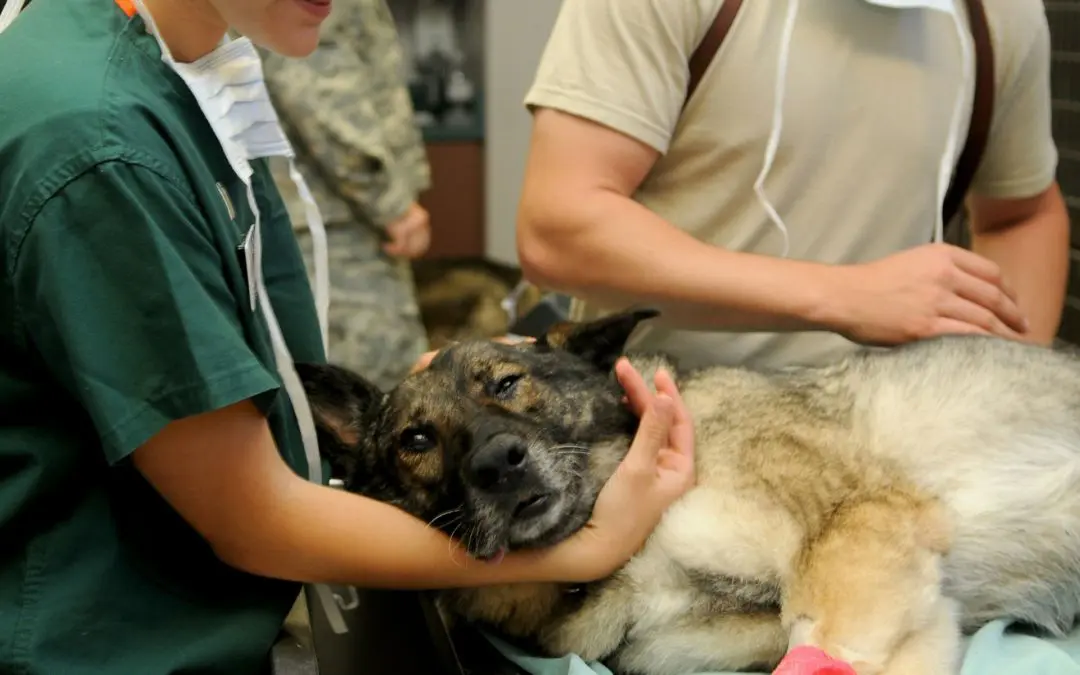When your dog or cat needs to have a medical procedure done, it’s often difficult to get around the need for anesthesia. And while there’s always a risk when putting a human or an animal under general anesthesia, veterinary medicine and technology have progressed by leaps and bounds in this arena. As a modern veterinary clinic, you can rest assured that when you bring your pet to East Valley Animal Hospital (serving Gilbert, Chandler & Mesa), you will find us using the most up-to-date and sophisticated guidelines, drugs, and monitoring systems available.
What are the risks of pet anesthesia?
As pet owners ourselves, we know just the thought of having to put Fido or Fluffy under general anesthesia can create anxiety. However, if we can ease your mind a little, a large study undertaken by David Brodbelt, a British board-certified anesthesiologist, concluded that on average, 99.75% of four-legged patients experience a full and healthy recovery from anesthesia. That means anesthesia or sedation-related deaths occurred in a very small percentage of dogs (0.17%) and cats (0.24%).
With that in mind, it’s always good to know what risks your feline or canine may be facing before they undergo a procedure. The following are risks that can increase complications during and after the use of general anesthesia:
- Age: kittens and puppies, as well as senior pets, have a harder time processing the drugs used during anesthesia. In particular, senior pets tend to have other health-related issues that increase risk.
- Weight: obese pets can be difficult to position during a surgical procedure that requires anesthesia, which can result in respiratory issues. On the other hand, a pet that is very small or thin can get extremely cold during a procedure and has little fat for the drugs to disperse to, making recovery a longer and more difficult process.
- Breed: dogs and cats that have flat noses and smaller nasal passages can experience increased difficulty when breathing, both during and after anesthesia.
- Medical conditions: healthy dogs and cats are at a much lower risk of complications during and after anesthesia. The study referred to in the above link observed that the mortality rate of healthy dogs was only 0.05% (1.28% lower than sick dogs) and that of healthy cats was 0.11% (1.29% lower than sick cats).
- Emergency: due to the urgent nature, if a pet undergoes surgery brought on by an emergency, they are at a higher risk.
How can risk be minimized?
At East Valley Animal Hospital, we believe your pets deserve the absolute best in veterinary treatment. We take every precaution before, during and after surgery to ensure the health of your pet.
The following are the precautionary steps we take when a procedure involves anesthesia:
Before Anesthesia
- Assessment: before administering anesthesia, we will always start with an assessment of your pet’s health. Our veterinary medical team will assemble any necessary medical history and lab results, and perform a physical exam. At this time, we will determine whether there is an anesthetic risk factor, and establish how to mitigate such risks. Certain complications, such as low blood pressure, shallow breathing, low body temperature, slow heart rate, and delayed recovery from anesthesia can all be anticipated and planned for during the assessment stage.
- Pre-anesthetic medications: these medications provide preventive pain management, reduce stress, and minimize the necessary dose of other anesthetic drugs. Pre-meds are specifically chosen for your pet, based on his or her unique anesthesia profile.
- IV catheter and pre-oxygenation: the IV catheter will allow for the safe administration of drugs and fluids, while pre-oxygenation charges the lungs with oxygen. Both of these steps promote a smooth, controlled transition to unconsciousness. In the case of complication or medical emergency, the IV catheter plays an important role in administering drugs and other fluids.
During Anesthesia
- Intubation: a breathing tube will be placed after your pet is unconscious, which will assist in a healthy respiratory function while your pet is under anesthesia.
- Patient monitoring: at this point the patient is unconscious and the procedure is underway. While monitoring we assess vital signs, which helps us recognize and prevent complications, as well as apply treatment in a timely manner, should they arise.
- Pain management. pain-relieving medications may be administered while your pet is under anesthesia.
After Anesthesia
- Recovery: once the procedure is over and anesthesia maintenance ends, the patient is usually transferred to a recovery room, where they are kept comfortable and observed for a normal return to consciousness.
- Discharge: during the discharge process we will discuss instructions for post-procedural home care with the owners, pain and/or other medications may be dispensed, and follow-up visits are scheduled.
As you can see, with this detailed process in place, we can assess for potential risk factors, foresee possible complications, and be prepared should an issue arise. Our caring and compassionate team at East Valley Animal Hospital is committed to helping you as the pet owner understand the medical procedure your pet is undergoing, and making sure you feel confident in the care that your pet is receiving. If you’re looking for a vet in Gilbert, give us a call today!
Images used under creative commons license – commercial use. Image by David Mark from Pixabay

